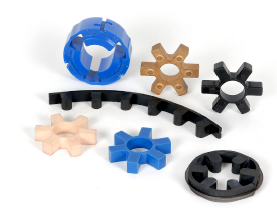Jaw Kind Coupling Assortment Method
The assortment approach for figuring out the proper jaw coupling dimension and elastomer involves working with the charts shown over the following pages. You’ll find 3 components to be selected, two hubs and 1 elastomer. Once the shaft dimension from the driver and driven of the application are from the very same diameter, the hubs chosen will probably be exactly the same. When shaft diameters vary, hubs selected will differ accordingly.
Data essential in advance of a coupling can be selected:
HP (or KW) and RPM or Torque of driver
Shaft sizes of driver and driven equipment and corresponding keyways
Application description
Environmental conditions (i.e. severe temperature, corrosive ailments,  room limitations)
room limitations)
Measures In Deciding on A Jaw Coupling
Phase 1: Determine the Nominal Torque of your application through the use of the following formula:
Nominal Torque = in-lb = (HP x 63025)/RPM
Nm = (KW x 9550)/RPM
Phase two: Utilizing the Application Support Things Chart 1 decide on the service aspect which very best corresponds for your application.
Step three: Determine the Design Torque of your application by multiplying the Nominal Torque calculated in Stage 1 from the Application Service Element established in Stage two.
Design Torque = Nominal Torque x Application Service Aspect
Step 4: Using the Spider Overall performance Data Chart 2, choose the elastomer materials which most effective corresponds to your application.
Stage 5: Employing the Jaw Nominal Rated Torque Chart 3 , find the proper elastomer materials column for the elastomer selected in Phase four.
Scan down this column on the initial entry where the Torque Value in the suitable column is better than or equal to the Design Torque calculated in Stage 3.
Once this value is located, refer to the corresponding coupling size while in the first column on the Jaw Nominal Rated Torque Chart three .
Refer towards the maximum RPM value for this elastomer torque capability to make sure that the application needs are met. In case the requirement isn’t content at this time, yet another form of coupling may very well be necessary for that application. Please seek advice from Lovejoy engineering for support.
Step 6: Evaluate the application driver/driven shaft sizes to the maximum bore size obtainable to the coupling chosen. If coupling bore dimension will not be substantial ample for your shaft diameter, choose the subsequent greatest coupling that should accommodate the driver/driven shaft diameters.
Stage seven: Employing the UPC variety choice table , uncover the ideal Bore and Keyway sizes required and find the amount.